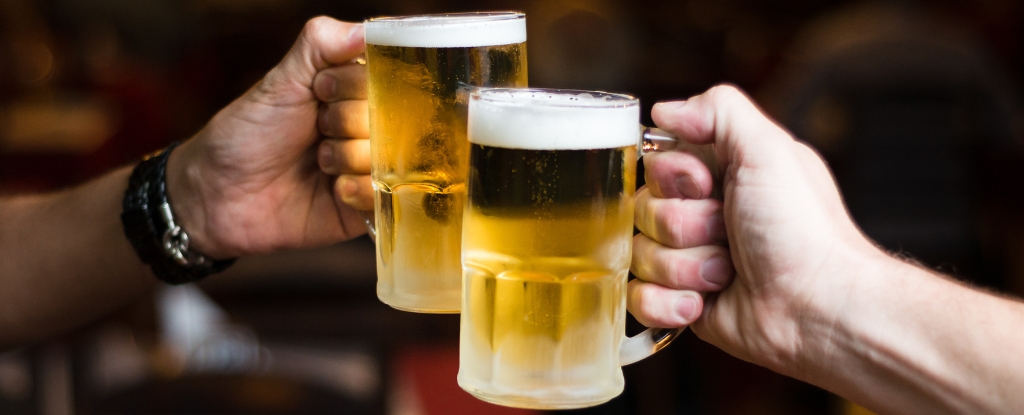Products You May Like
People whose ring finger is longer than their index digit tend to drink more alcohol, new research shows. But why is this so?
The answer lies in our understanding of sex differences. Some sex differences are influenced by social factors, but others have their roots in our biology.
There are marked differences between how much alcohol men and women drink, with men consuming far more. The reason for this and many other sex differences can be found in our exposure to sex hormones (testosterone and oestrogen) in the womb.
The male foetus secretes testosterone from his testes while smaller amounts from the mother’s bloodstream diffuse into both male and female foetuses.
At the same time, the mother’s oestrogen also finds its way to both male and female foetuses. So males experience higher prenatal testosterone in relation to oestrogen than do females.
Testosterone causes what are known as “organisational” changes in the brain and other organs in the foetus. These changes are then activated further in boys by a surge in testosterone at puberty.
It is thought that a record of our testosterone and oestrogen difference is found in the relative lengths of our index and ring fingers (second and fourth fingers or 2D:4D).
That is, your finger ratio, or 2D:4D, reflects your exposure to sex hormones in the womb, such that long fourth fingers indicate high testosterone and low oestrogen.
Comparisons across many species with five-digit limbs have shown that sex differences in digit ratio are widespread.
In animal experiments where testosterone was added at the foetal stage this results in offspring with the male form of digit ratio in mice, rats and monkeys. These sorts of experiments are not ethical to conduct in humans, so it remains a subject of debate.
Compared with women, men show higher alcohol consumption and more deaths associated with alcohol abuse. Could this sex difference be influenced in the foetus by “organisational” changes brought about by testosterone and oestrogen?
A study my colleagues and I conducted considered this question by relating digit ratios to alcohol consumption patterns.

Drinking habits
Participants were students from the Medical University of Lodz in Poland. Alcohol abuse is a growing cause of death in Poland.
The number of cases annually has increased from 4.6 to 7.0 per 100,000 since the beginning of the decade. And men are nine times more likely than women to die from alcohol-related causes.
Our study included 169 women and 89 men who completed the alcohol use disorders identification test (Audit), which asks questions about people’s drinking habits.
We found that participants with long ring fingers relative to their index fingers reported higher Audit scores and higher consumption of alcohol per week. The relationship was present in men and women, but it was stronger in men.
Several studies have now found a relationship between long ring fingers relative to index fingers and alcohol consumption. A large web-based survey of self-measured finger lengths reported that national averages and individual values of digit ratios predicted alcohol consumption.
Studies in Europe and Asia have found alcohol-dependent patients have very long ring fingers relative to index fingers. Our data supports these findings and extends them to people who are not dependent on alcohol.

Finger ratio reports provide a window into our very early development. On the plus side, a longer ring finger (relative to the index finger) is associated with a healthy heart and high performance in distance running, football, rugby, basketball, skiing and surfing.
On the minus side, it is related to autism, ADHD and internet addiction and prostate cancer.
The link between relative second- and fourth-digit length and alcohol consumption is a further piece in the jigsaw that highlights the powerful effect of prenatal sex hormones on our behaviour and physiology.![]()
John Manning, Professor, Sport and Exercise Science, Swansea University
This article is republished from The Conversation under a Creative Commons license. Read the original article.
